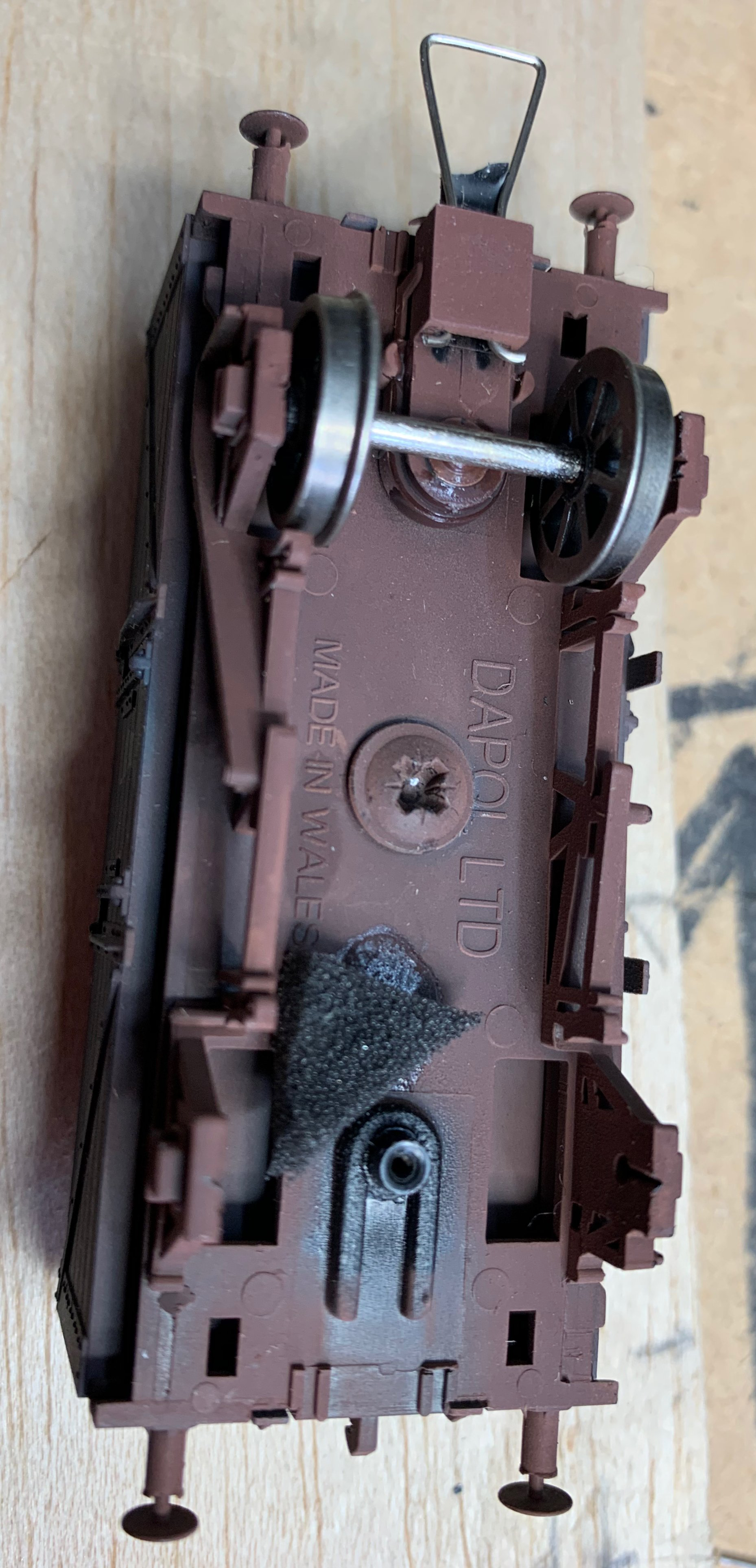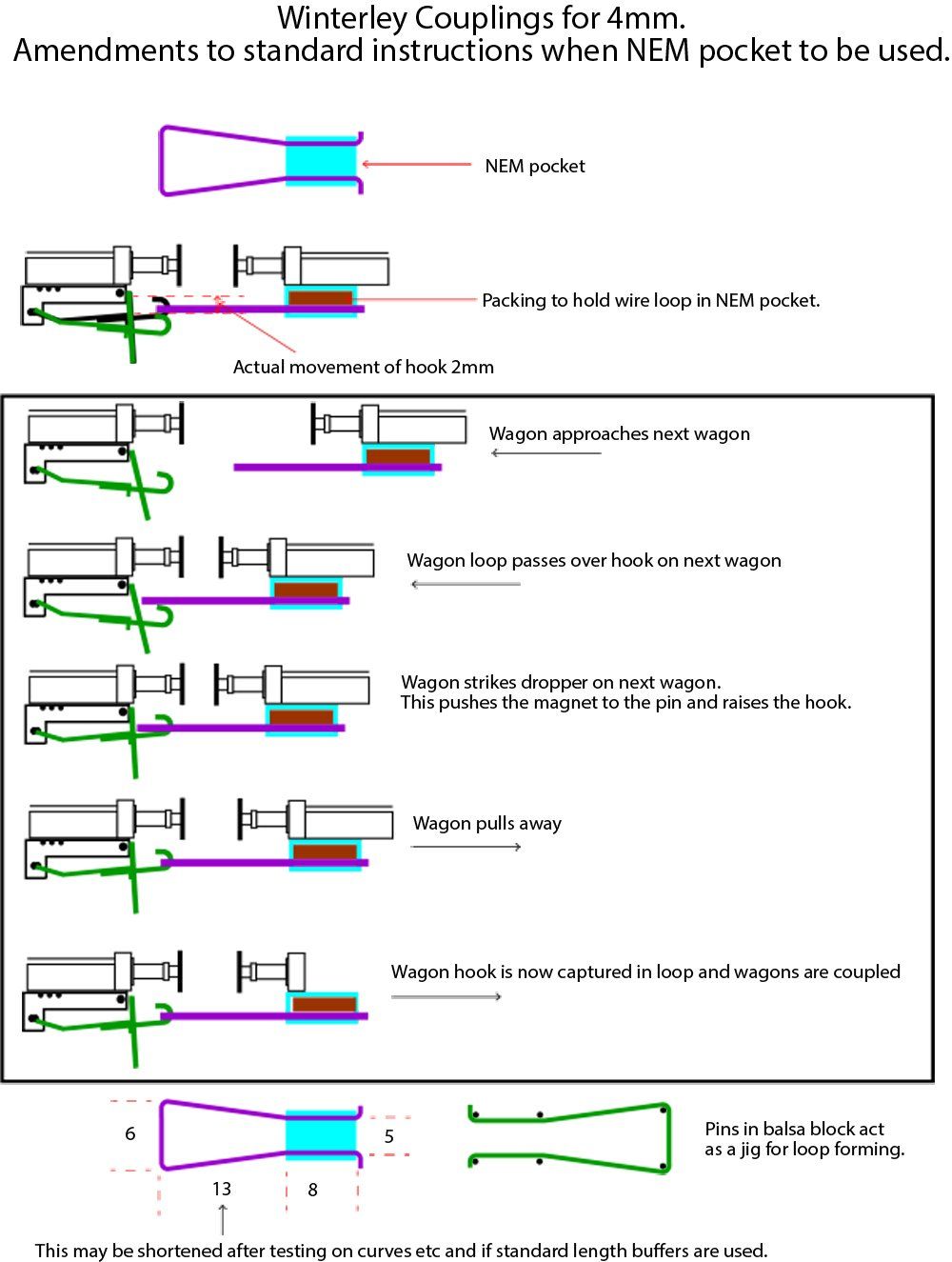Winterley Couplings – An update re the use on my 4mm layout.
The couplings have been around since about 1995, firstly in 7mm and then I was persuaded to produce them in 4mm.
As my modelling has been in 7mm until recently, I have only needed them in that scale for myself. Building Bigbury-on-Sea and the need for a reliable automatic “do it anywhere” coupling, I thought I should put my modelling skills(!) into attaching and testing some 4mm couplings.
The suggestion was also made recently that the NEM pocket might be useful for attaching the coupling to the stock. This would work well with locos and awkward stock such as bogie vehicles. However, after experimenting the only use for the NEM pocket was to hold the loop, the non-moving part of the assembly.
Long story, short, yes using a jig I can produce a loop that springs into the NEM pocket and just needs a thin plasticard packing to hold it in place.
I experimented with different lengths trying to keep the distance between stock as short as possible, but we need to compromise and be aware that some stock has longer buffer beams than others. The kit jig sorts that out.
The working parts are best attached to a smooth underframe just below the buffer beak. Any RTR coupling fixing needs removing. No going back after this move!
So far quite pleased with the results. There is basically no tolerance so much tweaking and testing with the jig and then with other stock is worth the effort.
The goods loco to haul in the daily goods will be a “dean goods” and I have chosen to fit the loop to the tender. (Removing it is easy and the Kadee could be put back in if needed on Winterley Junction where locomotives always travel forwards.) The loco uncouples wherever the operator decides and moves away to take water.
The station pilot (again needed for WJ will have its DCC operated Kadee couple left in place and will collect a GWR shunters truck with a WC at the other end. (We leave the pilot in this way as it will be needed to attach and detach coaches in the platform which are retaining their Kadees).
To enable the loco to return to the fiddle yard with the new train, a simple upside down hook is fitted (no moving parts) the flexibility of the loop and loco hook allowing a connection. It should therefore stay connected until uncoupled by hand in the fiddle yard.
Photo shows the NEM pocket holding the loop. The other end on this version of a Dapol wagons needs the ribs removed to allow the moving parts to be fixed to the bottom of the wagon.
The actions of how it all works is shown below.
Not all details are shown.


